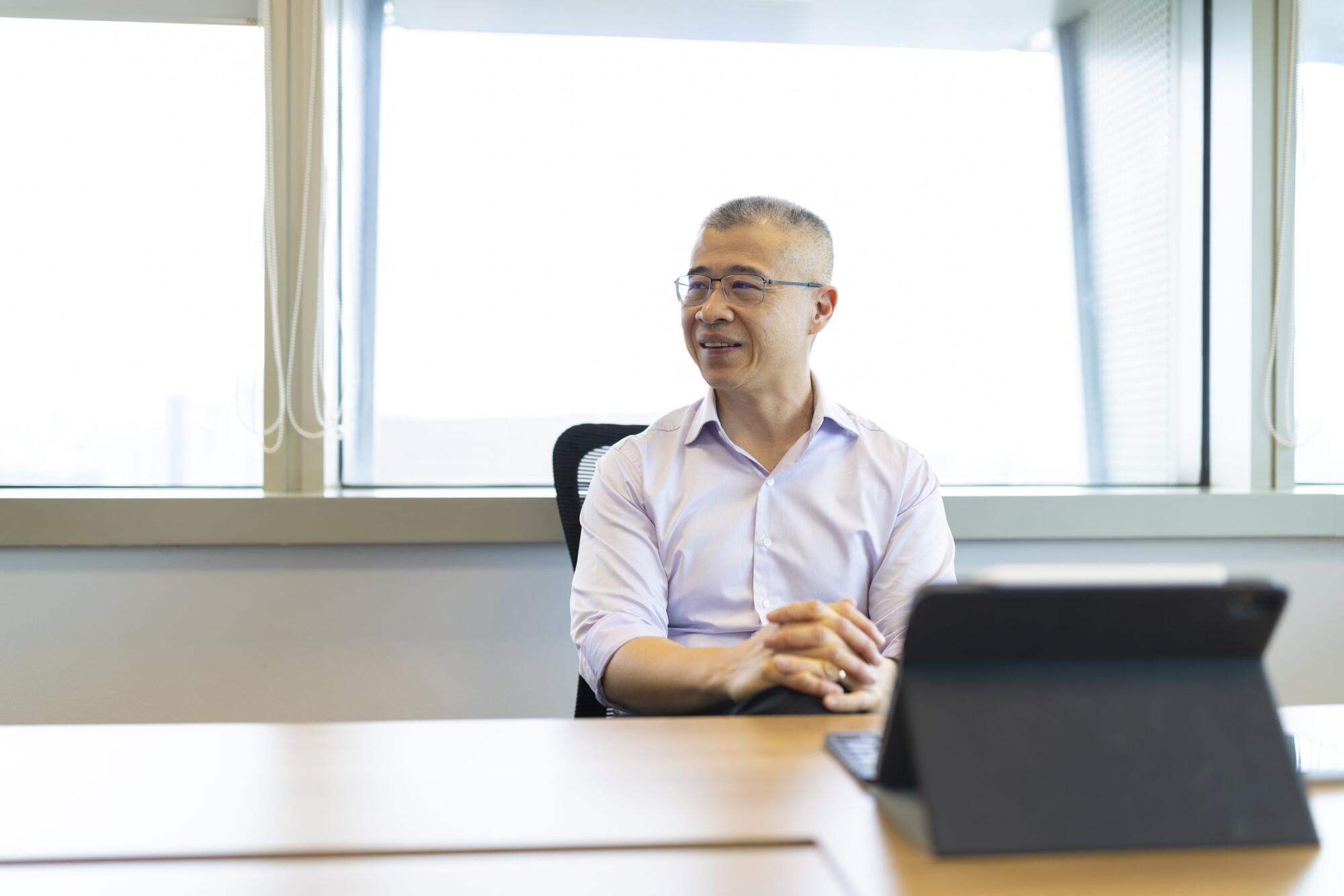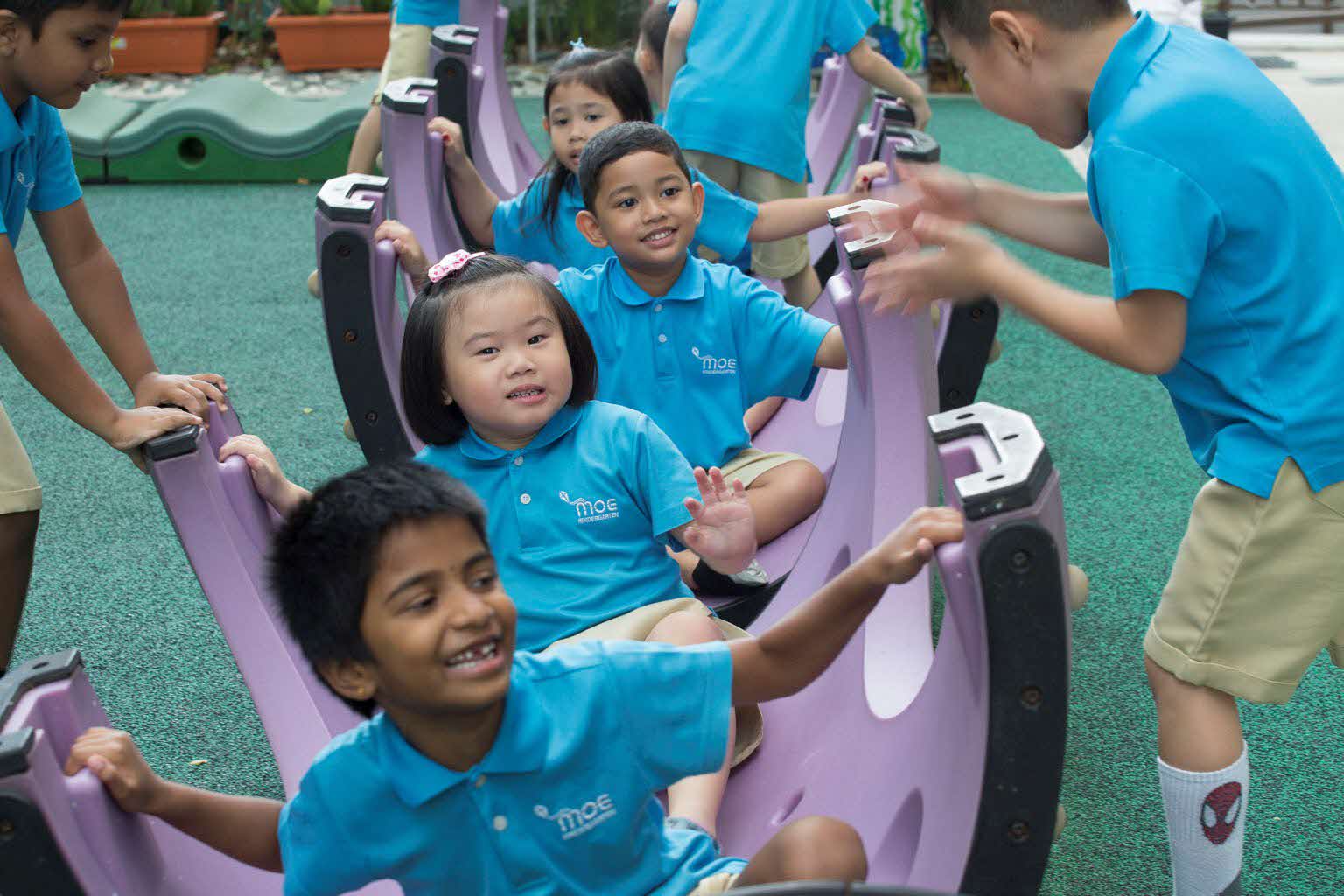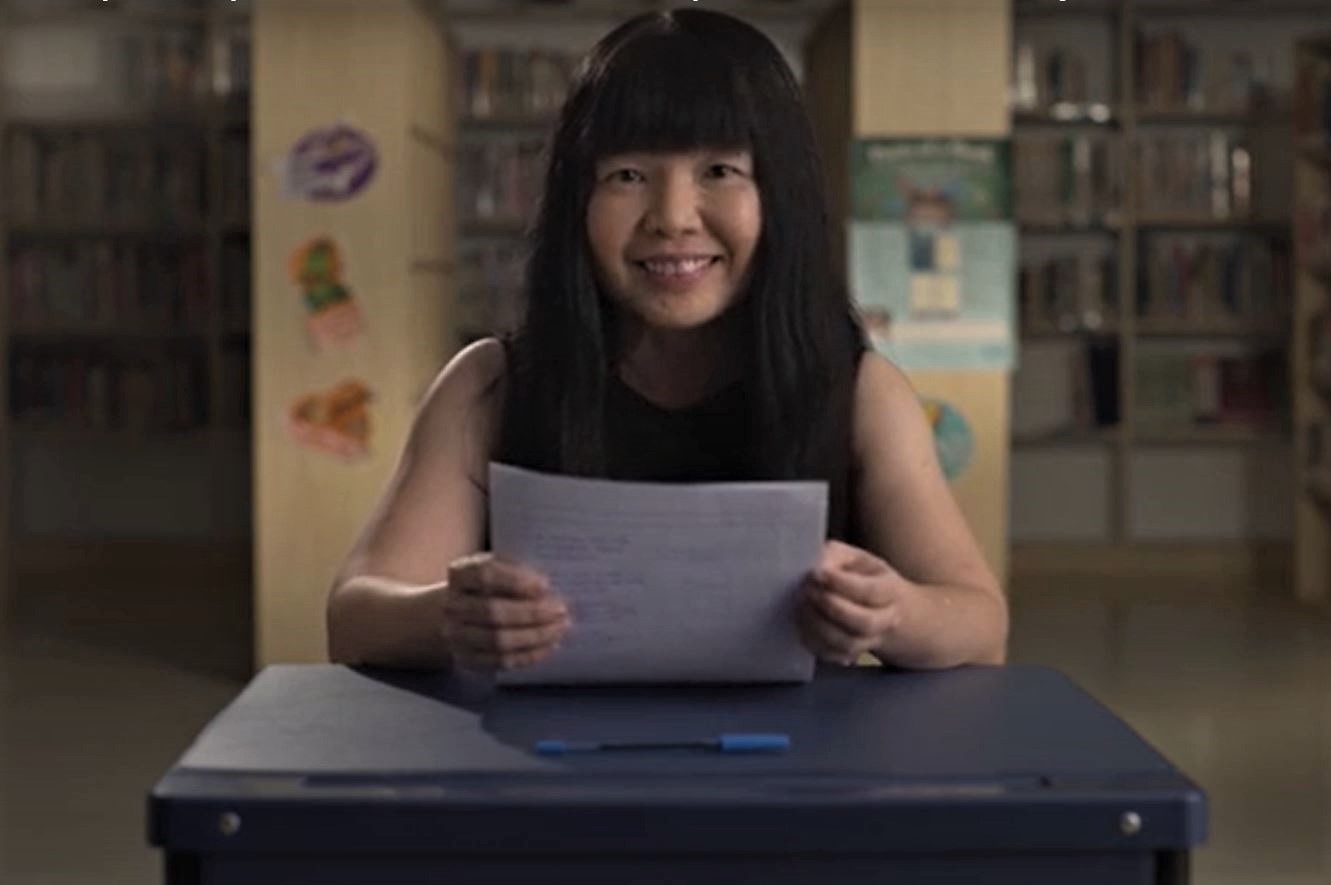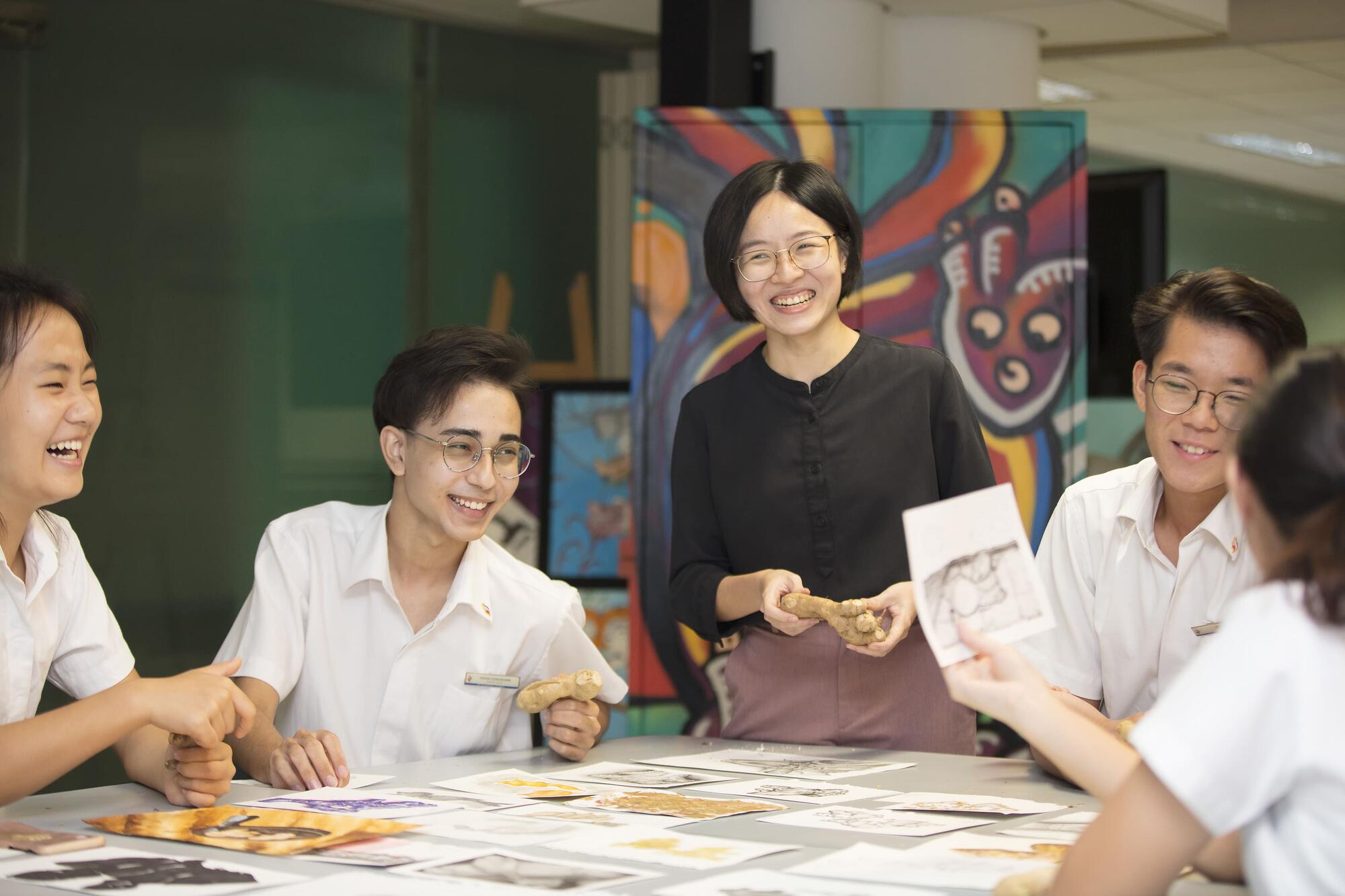The students tap away at their personal laptops intently, tackling the Maths questions on their screens. On a projector at the front of the classroom, a dashboard with their names listed starts to light up in colours of red, green and yellow.
This is a heat map, and the colours change in real time as students work on the Maths quiz. Red represents a wrong answer and green, a right one. Yellow indicates that the answer is incomplete, and might indicate that the student is uncertain about how to approach the question.
When the sheet fills up, the teacher scans the data to get a quick snapshot of where the class stands in understanding the new concepts he had just taught. It also tells him at a glance which students need more help, and he pays more attention to those in the red zone.
Welcome to the modern classroom, one powered by smart technology and data, where instant feedback spurs more effective learning.
Mr Aaron Loh, who was up until last year the Divisional Director of Educational Technology at the Ministry of Education (MOE), says more of these tech-powered advances are to be expected with the launch of the “Transforming Education Through Technology” Masterplan 2030 in September 2023.
Called the EdTech Masterplan 2030 in short in September 2023. the blueprint sketches out MOE’s vision for teachers to harness the learning data to provide more targeted guidance to students.
It used to be that teachers spent a chunk of time marking worksheets after a lesson, and could plug gaps in understanding only at the next lesson.
With learning tools and software including those that that tap on Artificial Intelligence (AI), teachers can now provide more accurate and immediate feedback on and to every student, says Mr Loh.
The heat map is a good example. “The heat map is a feedback tool that goes both ways,” he explains. “The technology gives teachers data to understand students better – to know which students need help, which concepts need more explaining. Students also know better where they stand, which is beneficial for self-directed learning”.
Tech helps to customise learning
Self-directed learning puts the power of learning in the student’s hands. Indeed, AI can help students to learn independently and at their own pace.
In unveiling MOE’s EdTech Masterplan 2030 this year, Education Minister Chan Chun Sing said technology offers opportunities to customise the learning experience, enabling students to better learn according to their needs and abilities.
A crucial pillar of the Masterplan is the Singapore Student Learning Space (SLS), an online portal launched in 2018 to enhance teaching and learning in schools. Parents who were home with their school-going children during the COVID-19 pandemic years would have witnessed how schools used the SLS to deliver lessons during home-based learning.
Teachers also use the platform to design lessons for the classroom. And as they exchange best practices with one another, they level up their expertise as a community.
They inspire one another to power up the SLS learning experience for the student, for instance, by inserting thinking prompts at any point of the lesson, to nudge students to pause and reflect on what they have learnt so far.
The SLS is also where assignments are hosted, complete with gamification features that kids enjoy.

SLS draws out even the quieter students – for example, those who would typically not raise their hands to answer questions. They find that the online platform is a safe space and an avenue for them to express themselves.
Mr Aaron Loh
Students can also tap on a repository of digital learning materials that is included for every subject in the MOE curriculum. These materials, which include additional readings, videos, images and audio files, are aligned with the curriculum. Students have access to all these materials regardless of the level they are at.
In short, with this portal, students can learn anytime, anywhere, Mr Loh explains. They may go over a lesson as often as they like, fast forward on areas they have already grasped, and even learn what they like beyond what is taught in class. “This kind of customised learning will level the playing field for those who need more help.”
AI supplements teaching efforts
All this talk amid the rapid scale-up and adoption of tech may lead some parents to wonder if contact time with teachers will be reduced, and if learning will become a more solitary practice.
On the contrary, says Mr Loh. With technology, teachers get a better view of their students’ learning needs. It also frees up time and energy for nurturing their students and tend to those who need more support.
Case in point: Teachers can now use AI-enabled features in the SLS to mark assignments. For example, the Language Feedback Assistant for English, known as LangFA-EL for short, is able to correct basic grammar and spelling errors in students’ English assignments. Another tool, the Short Answer Feedback Assistant, or ShortAnsFA, will provide grades and basic feedback for close-ended, short-answer questions.
The grades and feedback given will need to be vetted and approved by a teacher before they are released to students. “Teachers are deliberately drawn into the loop, to act as a check on the AI, to ensure that the system’s feedback is accurate and pedagogically sound,” he adds.
These AI assistants will free teachers up to focus on higher-order tasks with their students, and spend more time coaching those who lag behind. “For instance, English-language teachers can then focus more on content, or more complex tasks such as style and sentence structure,” he says.
The use of technology, including AI, has always been part of the EdTech plan for MOE schools.

When the pandemic accelerated both the adoption and acceptance of technology in learning, MOE built on this momentum by rolling out the Personal Learning Device Initiative (PLD Initiative) in 2021, seven years ahead of its original target of 2028.
That year, every secondary school student received their own PLDs such as iPads or Chromebooks, enabling them to acquire digital skills and learn effectively both online and offline.
This was possible as earlier information and communications technology (ICT) and EdTech plans had prepared the Ministry well, says Mr Loh. Following SLS’ inception in 2018, MOE developed a framework for e-Pedagogy the following year, to equip teachers with the know-how to design meaningful, tech-mediated learning experiences.
“With these three foundational stones in place – the software which is SLS, the e-Pedagogy, and the access to PLDs – we are now set to embark on the next phase.,” Mr Loh says. “One of the areas we are emphasising is the use of AI, which will allow us to better assess students’ mastery of a subject and customise learning.”
“Of course, the technology will bring about huge changes. But some things are constant: The teacher will continue to play a central role as a leader, a guide and an orchestrator.”
Tech-enabled classrooms have also become more dynamic and energetic, as students enjoy learning and collaborating more online.
“What we hear is that the SLS draws out even the quieter students – for example, those who would typically not raise their hands to answer questions. They find that the online platform is a safe space and an avenue for them to express themselves.”
Educating students about limits
If tech has made it easier to encourage class participation, it has also opened doors to some new predicaments.
What feels like an overnight rise of AI has put intelligent tools such as ChatGPT into our hands. This led to talk of how laziness and cheating will creep in if students can engage these tools to write essays and solve problem sums for them. While some countries have sought to ban such tools in schools, Mr Loh believes that is not a sustainable solution.
MOE cannot afford to ignore significant shifts in the technological space and risk educators and students being left behind, he says. Even with a ban, “students can still find a way to use these tools. In any case, you can’t stop the AI tide. Instead of banning, you have to educate”.
At the onset of the Generative AI wave in 2023, MOE guided schools on how students can use such tools productively, and what to be wary of.
“Students need to be educated about the technology and its limits. They can use ChatGPT as a sounding board to generate ideas, but they need to fact-check its content, which has been known to contain inaccuracies and may not be the most updated,” he notes.
While teachers can monitor students’ usage of such tools in the classroom, parents need to help their children set healthy boundaries with technology at home, adds Mr Loh. He understands how tough this can be. He is the father of four teenagers, and together with his wife, they set limits for how long each child can spend on a device, and what they can use it for.

As parents, we have to strike a balance between regulating and being approachable. We want them to feel comfortable opening up to us, to tell us what they’re going through, yet we also have to instruct, give guidelines, and teach them how to use their devices responsibly.
Mr Aaron Loh
“As parents, we have to strike a balance between regulating and being approachable. We want them to feel comfortable opening up to us, to tell us what they’re going through, yet we also have to instruct, give guidelines, and teach them how to use their devices responsibly.”
He relishes seeing how comfortable his children are with technology and online activity, whether it is to meet their classmates, do research, crosscheck sources, create shared documents, or work on school projects.
They pick up digital skills in school almost as a byproduct of learning, and where he as a parent comes in is to impart guiding values.
Mr Loh feels that parents have a window to inculcate the right values about technology in their children.
“Once they are at the post-secondary level, they are pretty much on their own and parents will need to let go.”
The past six years as MOE’s EdTech chief have been “eventful”, says Mr Loh, who assumed the position of Principal of Raffles Institution this year.
In another significant move to enhance student learning via tech, Mr Loh had overseen the deployment of Educational Technology Officers (ETOs) to support school clusters. It is a new role which kicked in last year, involving teachers holding MOE HQ positions who will aid in upskilling schools in the effective use of tech for teaching and learning.
At the end of the day, the focus of his department’s efforts is to enhance student learning.
“The more prominent the technology becomes, the more important the face-to-face connection between students and teachers,” Mr Loh sums up. “Technology can help teachers focus more on the human part of teaching.”






